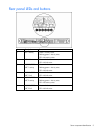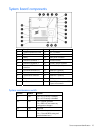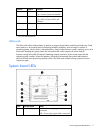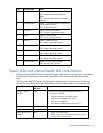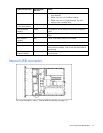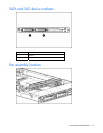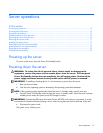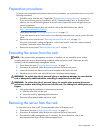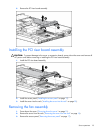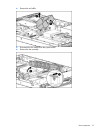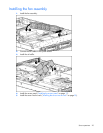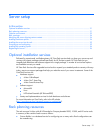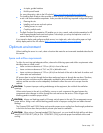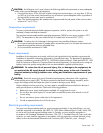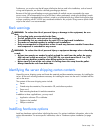
Server operations 17
4.
Loosen the thumbscrews that secure the server faceplate to the front of the rack.
5. Extend the server from the rack ("Extending the server from the rack" on page 16).
6. Disengage the server from the rack. For more information, refer to the documentation that ships with
the rack mounting option.
7. Place the server on a sturdy, level surface.
Removing the access panel
WARNING: To reduce the risk of personal injury from hot surfaces, allow the drives and
the internal system components to cool before touching them.
CAUTION: Do not operate the server for long periods with the access panel open or removed. Operating
the server in this manner results in improper airflow and improper cooling that can lead to thermal damage.
1. Power down the server if the standard cable management solution is installed ("Powering down the
server" on page 15).
NOTE: If the optional cable management arm is installed, you can extend the server and perform hot-plug
installation or maintenance procedures without powering down the server.
2. Extend the server from the rack, if applicable ("Extending the server from the rack" on page 16).
3. Use a screwdriver to remove the captive screw.
4. Slide the access panel back and lift it off the server.
Installing the access panel
1. Place the access panel on top of the server, allowing it to extend past the rear of the server
approximately 10 mm (0.39 in).
2. Slide the access panel forward to lock, and tighten the captive screw to secure the access panel to
the server.
Removing the PCI riser board assembly
CAUTION: To prevent damage to the server or expansion boards, power down the server and remove all
AC power cords before removing or installing the PCI riser board assembly.
1. Power down the server ("Powering down the server" on page 15).
2. Remove the server from the rack ("Removing the server from the rack" on page 16).
3. Remove the access panel ("Removing the access panel" on page 17).
4. Disconnect any internal or external cables connected to any existing expansion boards.



